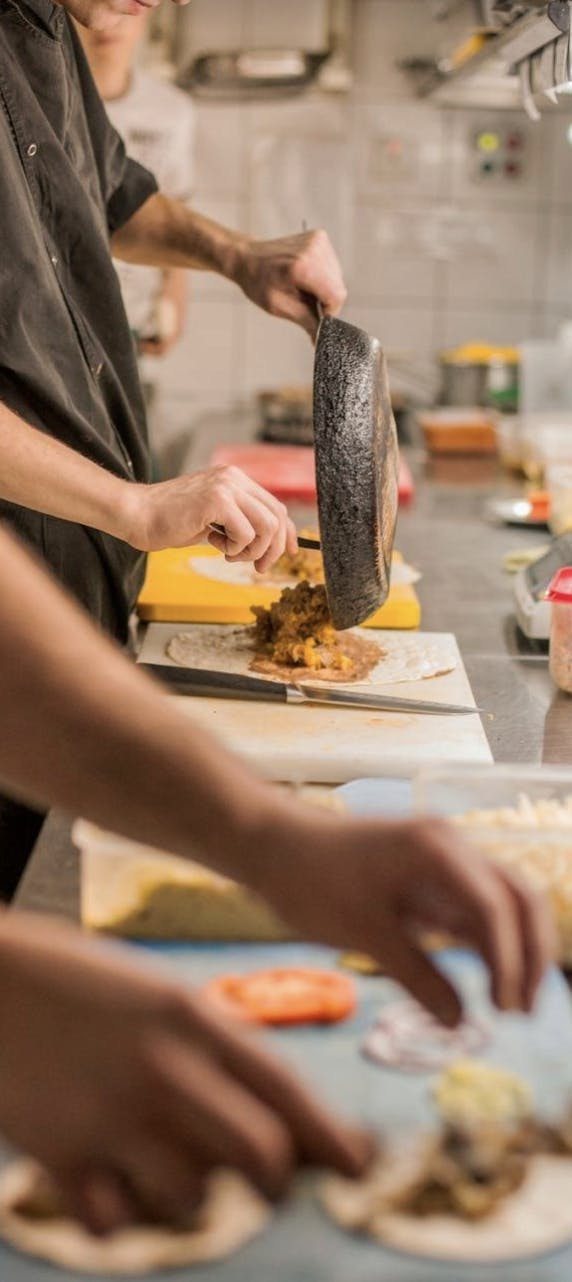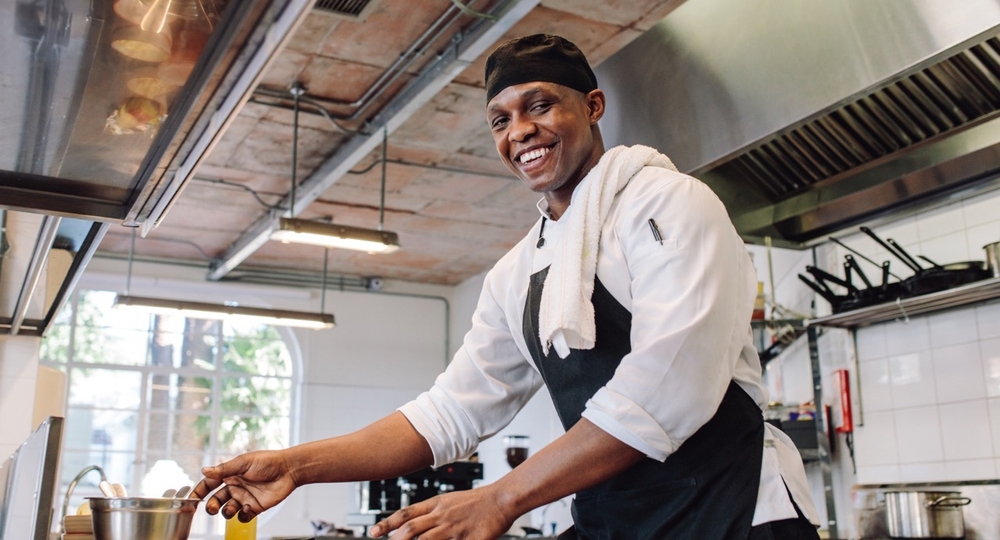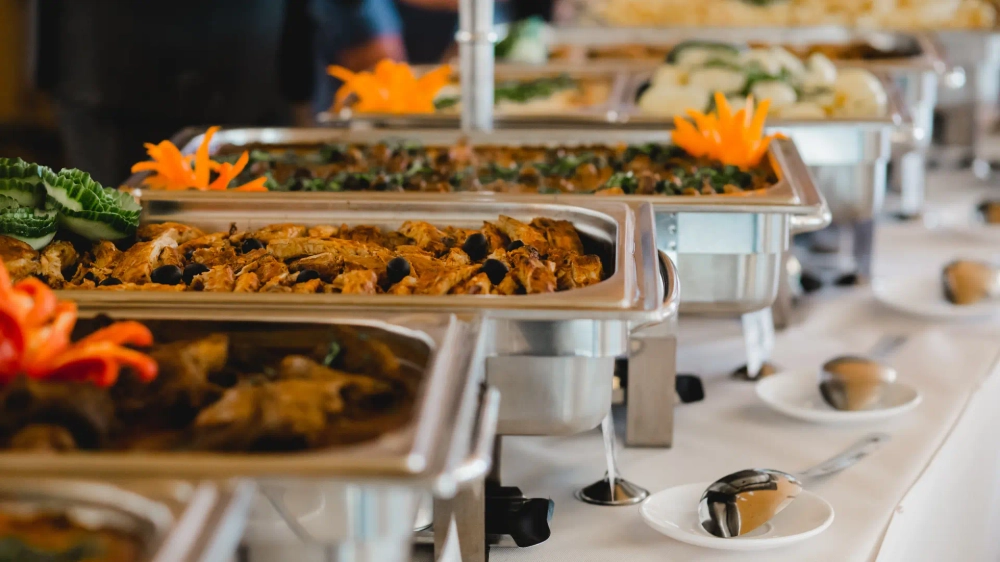Menu Costing for Restaurants: Maximize Your Profitability
Table of Contents
CloudKitchens
How many tacos can be delivered from a 1000sqft restaurant?
The same amount as a 200sqft ghost kitchen.
Mastering Menu Costing: The Key to Restaurant Profitability
Deciding how to price your dishes is essential to profitability and success in the restaurant industry. Sell your food for too little, and you risk losing money on ingredients and labor. But if your menu boasts luxury price tags without the cuisine to match, few diners will buy in.
Striking that sweet spot between profitability for owners and affordability for guests is a tightrope walk over a vat of bubbling peanut oil, but it’s necessary to stay competitive.
Here, we’ll break down the different factors influencing menu costs and offer key tips for how to effectively price your dishes. This is an essential guide for all restaurateurs hoping to establish profitable, yet sustainable pricing practices in their spot.
The factors that affect menu costing
Finding the optimal price points for your dishes is essential to sell sufficient volumes to meet operating costs. Begin by calculating how much you pay for each serving’s ingredients—or your Cost of Goods Sold (COGS). Then, factor in how much labor works into the price of each plate. If your chef, for instance, gets paid $25 per hour and can turn out, on average, ten dishes during that time, your cost of labor per plate runs around $2.50.
Calculating ingredients and labor gets you a solid idea of your direct costs for each dish, but it doesn’t tell the whole story. There are other less obvious factors to consider when pricing your menu items, including:
- Locational costs – Rent, utilities, and upkeep are all persistent expenses that significantly increase your restaurant’s total operating costs.
- Food waste – Unfortunately, not every ingredient you buy gets out of the kitchen before going off. The costs of wasted food need to be recouped somehow, so the price should be baked into the dishes that do make it to your diners’ plates.
- Culinary experimentation – Dazzling dishes don’t appear from thin air. They take planning as well as trial and error to come together, and experiments cost just as much as the final dishes customers enjoy.
Fortunately, with these expenses also come opportunities to reduce costs. With meticulous inventory management, for example, you can avoid wasting the 10% of food restaurants throw away on average.
Likewise, effective negotiations with food suppliers can save you significantly on ingredients. Try forecasting your need for different items and then committing to specific monthly volumes to strike deals with wholesalers.
In the culinary industry, food is generally your only revenue stream. Thus, when setting menu prices, it’s essential to account for all these and other potential factors so that, at the end of the month, your business’s bottom line ends up in the black.
Key strategies for pricing your dishes
Your target market will have a large bearing on how high you can set your prices. The average American spends $166 per month dining out, but this amount varies regionally. Likewise, nearly half of diners spend between $11 and $20 per meal, so when projecting potential prices for your menu, keep these figures and local average food prices in mind.
That said, your prices don’t necessarily need to be “average.” Instead, they should reflect the caliber of your ingredients, the creativity of your dishes, and the cashflow of your clientele.
Oftentimes, you can price higher if:
- You create a memorable dining experience with elegant decor and an alluring ambiance
- Your dishes live up to your customers’ expectations and send them home happy
- You outperform your competitors or offer up an experience they simply can’t recreate
In essence, you want to stand out from the crowd and differentiate your menu from other restaurants in town. To elevate your dishes above the masses and command top-dollar for your cuisine, try:
- Using superior ingredients – If you’re the only spot shaving fresh truffles or scooping up Beluga caviar, you’ll be diners’ top choice for haute cuisine. You don’t necessarily need to offer decadent dishes to differentiate your ingredients, however. Simply getting higher quality versions of everyday items—such as grass-fed beef or locally grown vegetables—can be enough to elevate your menu over your competitors.
- Testing unique cooking techniques – From Mongolian grills to Moroccan tagines and Indian tandoors, there are countless cooking techniques in use around the globe. Experiment with different approaches—especially those not already on offer in your area—to land on a cooking style that matches your target market and culinary goals.
- Catering to different diets – Is your neighborhood seriously lacking vegan, keto, or raw food options? Research what niche diets are in vogue and, if they’re popular enough in your area, consider opening a spot that caters specifically to them.
If you’re considering pricing your dishes on the higher end of the scale, try ditching dollar signs on your menu. A study from Cornell University found that diners spend more when they’re presented with a number alone. Further research into the psychology of menu design found a variety of other factors can influence customers to spend more, including:
- Length – Unless you specifically market your spot as having a huge variety of dishes, diners should be able to read your whole menu in under two minutes.
- Visuals – Beautifully shot pictures of your signature dishes, memorable graphics, and suitable fonts all contribute to a diner’s experience of your restaurant and can convince them to try something new off your menu.
- Commitment to aesthetics – Your menu should match the overall theme and design of your restaurant and be a complement to, rather than a departure from, its aesthetics.
Finally, when deciding how to price your menu items, continually review your expenditure on different ingredients and adjust accordingly. Food costs increased by almost 6% in 2023 so, if your menu prices didn’t, then your revenue per item likely declined.
Reduce your operating costs and maximize profits with Cloudkitchens
Sometimes, raising your food prices or redesigning your menu isn’t the path to increased profitability. Whether you’re just starting your restaurant or own a well-established spot, operating a ghost kitchen from CloudKitchens can reduce your operating costs to achieve the same effect as elevated prices.
Ghost kitchens are types of commercial kitchens optimized for preparing food for delivery. They eliminate the need for expensive dining room rentals, front-of-house wages, and other brick-and-mortar costs that cut into your profits. So, if you’re wondering “How much does a restaurant owner make?”, with CloudKitchens, it can be a whole lot more.
CloudKitchens also allows you to explore different restaurant ideas without the need to reinvent your image or reprint menus. Check for locations in your area to tour a kitchen and start serving up delectable delivery in as little as four weeks.
We have locations all over the US, so if you’re in Texas and need a commercial kitchen in San Antonio or a commercial kitchen in Houston or live in California and need a San Diego ghost kitchen, we’ve got you covered! We are ready to improve your efficiency to empower your food business journey.
Explore our locations all across the U.S. today.
Explore ghost kitchen locations across the US:
- Ghost kitchens in Seattle
- Ghost kitchens in San Francisco
- Ghost kitchens in LA
- Ghost kitchens in NYC
- Ghost Kitchens in Toronto
- Ghost Kitchens in Atlanta
- Ghost Kitchens in Dallas
- Ghost Kitchens in Chicago
- Ghost Kitchens in Denver
- Ghost Kitchens in Miami
| DISCLAIMER: This information is provided for general informational purposes only and the content does not constitute an endorsement. CloudKitchens does not warrant the accuracy or completeness of any information, text, images/graphics, links, or other content contained within the blog content. We recommend that you consult with financial, legal, and business professionals for advice specific to your situation. |
Read more:
- Boost your restaurant’s profitability by managing labor costs effectively
- Restaurant Financing & Loans Guide
- Navigating Restaurant Equipment Financing: Strategies for Success
Sources:
International Journal of Applied Management & Technology. Ways to Reduce Restaurant Industry Food Waste Costs. https://scholarworks.waldenu.edu.
Yahoo! Finance. See How Much the Average American Spends on Dining Out: How Does Your Spending Compare?. https://finance.yahoo.com/.
Cornell University School of Hotel Administration. $ or Dollars: Effects of Menu-price Formats on Restaurant Checks. https://ecommons.cornell.edu/
Georgia State University. The Psychology of Menu Design: Reinvent Your ‘Silent Salesperson’ to Increase Check Averages and Guest Loyalty. https://scholarworks.gsu.edu/.
United States Department of Agriculture. Food Price Outlook, 2024. https://www.ers.usda.gov/.
More insights & stories
There’s more where that came from.
Get in the know and check out our additional insights


